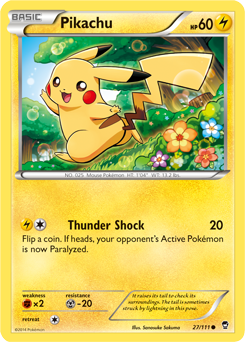Your Friendly Local Game Store
in Southern New Hampshire
483 Amherst St., Nashua, New Hampshire 03063
603-204-5275
Google Directions
Your Friendly Local Game Store
in Southern New Hampshire
483 Amherst St., Nashua, New Hampshire 03063
603-204-5275
Google Directions
The various sets of the Pokémon TCG can be roughly divided into 9 generations. These TCG generations roughly match the generations of the core video game series, as well as typically sharing a common card design element amongst the various sets of a generation.
There have been two publishers of the Pokémon TCG–Wizards of the Coast (WOTC) and The Pokémon Company (TPC). Wizards of the Coast’s output comprises the first two generations of the TCG, while the remainder is from The Pokémon Company.
The first generation sets covered the original 151 Pokémon of the Kanto Region, as explored in the original Red, Blue, and Yellow games for the Game Boy. The card design for this 1st generation is informally called the “Base-Rocket Design”.

The 2nd generation sets covered the expanded pokédex of the Johto Region, as explored in the Gold, Silver, and Crystal games for the Game Boy Color. Two new Pokémon types were introduced in this generation–Darkness and Metal.
These sets, with the exception of Legendary Collection, featured an updated card design known as the “Neo Design” as the set names all start with Neo. Legendary Collection, being a reprint set kept the original Base-Rocket design for its cards. Interestingly, the Southern Islands Collection, which was a special promotional release, featured the new Neo design in English, but the older Base-Rocket design in Japanese. This was due to the 2-year time delay between the Japanese release and the later English release.
Neo Destiny was the last set printed with distinct 1st Edition and Unlimited printings.
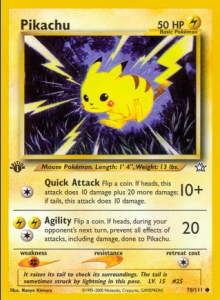
The next group of sets continued to cover the Johto region, but featured a new card face which supported the e-Reader add-on to the Game Boy Advance. Cards contained ‘dot-code’ along the borders which could be scanned with the e-Reader to reveal Pokédex entries or other information.
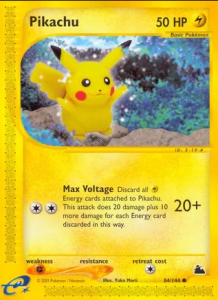
The 3rd generation of TCG sets featured a change in publisher from Wizards of the Coast to The Pokémon Company. The sets in this generation from EX Ruby and Sapphire through EX Emerald, as well as the final set, EX Power Keepers, feature the Hoenn Region, as seen in the core games Ruby, Sapphire, and Emerald for the Game Boy Advance. EX Unseen Forces features Pokémon from the 2nd generation Gold, Silver, and Crystal games. The sets from EX Delta Species through EX Dragon Frontiers take place in an all-new region not seen in the video games known as Holon. Pokémon in Holon were changed by electromagnetic radiation, as represented by Delta Species Pokémon cards, where the Pokémon’s type is different from normal. For example, Pikachu in the Holon region are metal types, rather than electric.
These sets feature an updated card design from the previous generation. While the first four sets continue to support the e-Reader, the design of the e-Reader cards was drastically changed from the previous Wizards of the Coast e-Reader sets.
This generation also introduced a brand new class of Pokémon, the Pokémon-ex. Pokémon-ex are stronger than normal pokémon, but also have a downside when they are defeated. Pokémon-ex featured throughout the EX era. A second class of new pokémon were introduced beginning in EX Team Rocket Returns, the Pokémon Star. Pokémon Star featured alternate (“shiny”) colorations of pokémon.
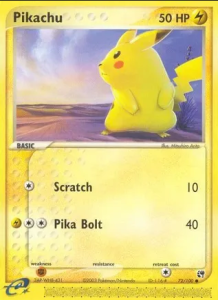
The fourth generation of sets features the Sinnoh Region, as featured in the core games Diamond, Pearl, and Platinum for the Nintendo DS.
Pokémon-ex and Pokémon Star card types were retired, and new Pokémon LV.X were introduced in their place.
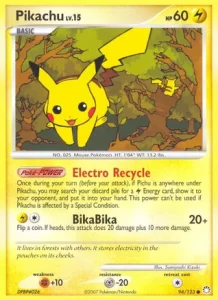
In between the fourth and fifth generations of core games, Nintendo released HeartGold and SoulSilver for the Nintendo DS. These were highly-popular re-imaged versions of the original Gold and Silver games from the Game Boy Color era. This “sub-generation” included four HGSS sets, plus Call of Legends, a stand-alone set featuring a mix of reprints and cards previously unreleased in English. Call of Legends helped to bridge the gap until the release of the Black and White series of games and cards.
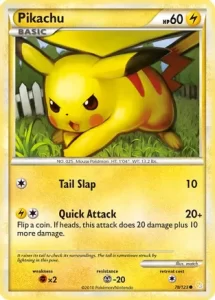
Fifth generation sets feature the Unova region, as explored in the Nintendo DS games Pokémon Black, Pokémon White, Pokémon Black 2, and Pokémon White 2. Generation V is considered the start of the “modern” era of the Pokémon TCG. The “Expanded Format” of the TCG game allows for cards to be played from Black and White to the present. Thus, any cards older than this are not playable in sanctioned formats.
Generation V introduced many changes to the game, many of which continue to influence the state of the game today. Some of the more significant changes include the introduction of Full Art cards, Pokémon EX, ACE SPECs, and Team Plasma themed cards. Interestingly, Pokémon EX, which came to define the Black & White era were not introduced until the fourth set, Next Destinies.
Dragons Exalted also introduced a new Pokémon type to the Pokémon TCG–the Dragon type, the first new type in over a decade! The next set, Dragon Vault was a special mini set consisting of only 20 cards–17 dragon type Pokémon and 3 trainer cards.
The final set in the generation, Legendary Treasures included a subset of 25 cards called the Radiant Collection, numbered RC1 through RC25. Subsets feature largely in later generations.
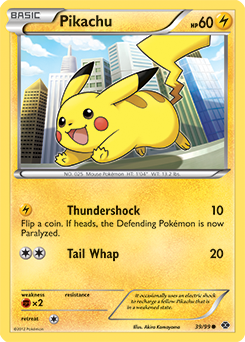
Generation Six features the Kalos region, as explored in the 3DS games Pokémon X and Pokémon Y. Also included in Generation Six is the return to the Hoenn region via the remake games Pokémon Omega Ruby and Pokémon Alpha Sapphire for the 3DS.
The XY generation introduced Fairy type Pokémon to the game–the first new type since Dragon types were added the previous year. Accompanying the new fairy type was a new basic Fairy energy!
Generation VI was introduced with a special set–the XY Kalos Starter Set, a special set consisting of three 60-card decks, each featuring the new Kalos region starter Pokémon. In total, the Kalos Starter Set only included 39 unique cards.
The XY base set introduced Pokémon-EX, similar to the older Pokémon-ex of the Generation III EX era. Mega Evolutions are also introduced to the game in the form of “M Pokémon EX”.
XY introduced a few new rules changes to the TCG, particularly that the active Pokémon of the first player cannot attack on the first turn, mitigating some of the advantage of winning the coin toss and going first.
The latter half of this era feature Pokémon BREAK evolutions–special cards in a horizontal format that can evolve stage 2 Pokémon.
Generations was a special set celebrating the 20th anniversary of Pokémon and exclusively featured Pokémon from generation 1. Like the Legendary Treasures set of the Black and White era, this set featured a Radiant Collection subset as well, numbered RC1 through RC32. Generations was not sold in typical booster box configurations and packs could only be obtained through various product configurations like box sets.
The final set in generation six was XY Evolutions, a reinvention of the many of the original Pokémon from the earliest TCG sets. They even featured card frames reminiscent of the original cards, but updated with modern features, like set symbols. Interestingly at the time of release, XY Evolutions was an extremely unpopular set. It was very heavily printed and underwhelming in power levels for TCG players. The nostalgia of Pokémon hadn’t hit peak levels yet. It wasn’t until the COVID pandemic and the Pokémon boom that followed that Evolutions became a valuable, sought- after set.
